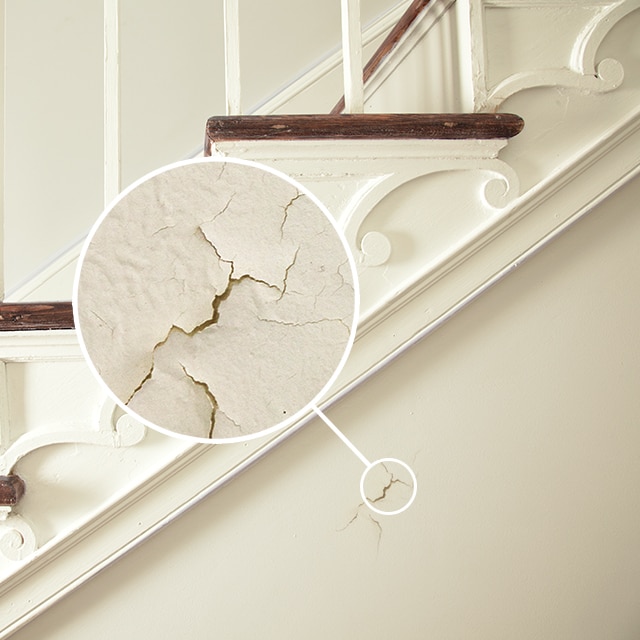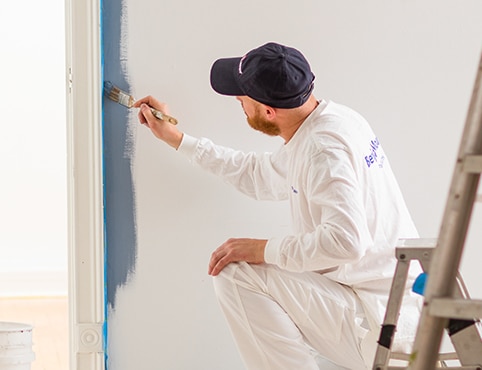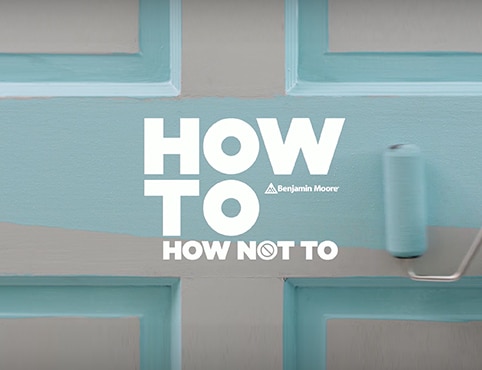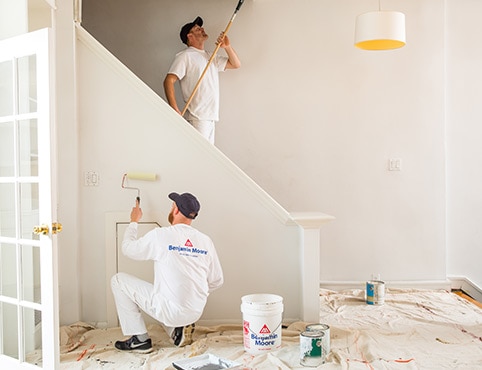Flaking paint occurs when cracked paint begins peeling off its original substrate. In its early stages, the problem appears as hairline cracks in the paint, but will worsen over time if the problem is not fixed, causing larger pieces of coatings to chip off.
Paint cracking on walls, ceilings, and exterior surfaces happens due to a variety of causes, one of the most common being poor preparation of a surface prior to painting. Painting over cracked paint is a bad idea; it is important to remove any flakes from the surface before repainting.
Why Does Paint Crack and Flake?
- Poor surface preparation, especially when the paint is applied to bare wood without priming, or to previously coated surfaces that show signs of cracking or flaking paint.
- Using low-quality paint, as it may have inadequate adhesion and/or flexibility.
- Spreading paint too thin during application.
- Paint becoming brittle with age, failing to expand and contract with temperature and humidity changes.
Note: A more uncommon version of paint cracking is mud cracking, which is when paint cracks when drying due to too-thick application or extremely dry painting conditions.
How to Fix Cracked or Flaking Paint
- If cracking does not go down to the substrate: Remove the loose or flaking paint with a scraper or wire brush, sand the area to feather the edges, prime any bare spots, and repaint the surface.
- If cracking goes down to the substrate: Remove as much of the existing paint as possible. Methods for removal could include scraping, sanding, using a heat gun, abrasive blasting, etc. Once most of the paint is removed and surface is smooth and even, prime, and repaint with a quality latex paint.
How to Prevent Paint from Cracking or Flaking
- Take care prepping surfaces before painting: Only apply paint to surfaces that have been properly sanded, cleaned, and primed.
- Never paint over cracked paint.
- Allow paint to dry thoroughly before adding another coat.
WARNING: If you scrape, sand or remove old paint, you may release lead dust. LEAD IS TOXIC. EXPOSURE TO LEAD DUST CAN CAUSE SERIOUS ILLNESS, SUCH AS BRAIN DAMAGE, ESPECIALLY IN CHILDREN. PREGNANT WOMEN SHOULD ALSO AVOID EXPOSURE.




